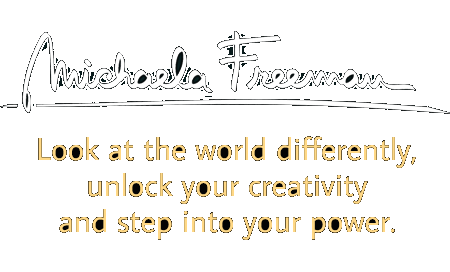When content strategy and content development became buzzwords, I finally had a name for what was already doing for many years as a side effect of my creative projects, web design, brochures and more. I can turn intimidating piles of materials, ideas, notes, recordings and photo albums into final products.
Concept Creation
A well-defined concept should produce clear guidelines to all involved parties – clients and their employees or team members, as well as creative professionals hired to create the actual content (articles, brochures, videos, websites, etc.). This may include creating a logo or brand strategy, defining your motto or values, summarizing qualitative aspects of your market research (knowing your audience), summarizing what differentiates you from your competition, etc. I devote a special page to Concept Creation because this work that should be done prior to diving into the content itself, but seldom gets the attention it needs.
If needed, I put on my detective hat, looking for the hidden qualities of my clients’ projects, the things they overlook or underestimate. Especially in small projects, I often end up doing a creative coaching session to identify and confirm the values and processes we are trying to present. I don’t just take the materials clients give me and process them, I first help them define who they are and what it is they are trying to share and to whom.
 Content Strategy
Content Strategy
Content Strategy is a relatively new field that arose from the need to properly organize content and plan it in line with marketing strategies. Until recently, companies would start their presentations and websites with graphics and only once the templates were ready they would call in a copywriter to ‘fill in the blanks’. This is, of course, backward – we first need to know what it is we’re trying to present (information, writing) and only then decide on how (visuals, video).
There are many ways to deliver what you are trying to share. Is it better as a series of articles, as a webinar, as a video or a downloadable PDF? This is particularly true in reconstructing websites or revising existing materials, where someone needs to make the judgment over what stays and what goes. This may require drilling into usage statistics to see which existing content is popular, but also sustain the human point of view – sometimes less popular content is still critical for those who look for it.
Other than experience, Content Strategy requires the ability to envision complex structures and imagine the user experience and flow of information. It’s a little bit like getting a gigantic list of books and finding similarities between them in order to group them into proper shelves. The job is about studying and absorbing that list of needs and materials and finding patterns and pathways.
The goal is to strip off all unnecessary information and deliver the essence in a concise, smooth finished project. Very often this requires:
- revising and cataloging a vast amount of information or visual content,
- simplifying the presentation or vision,
- merging and dividing ideas,
- finding common denominators in a random pile of materials,
- formatting and structuring chapters or segments,
- highlighting core elements through graphic or audiovisual content.
If your website has five pages, you probably don’t have a problem. Having fifty or five thousand is a very different story. In non-fiction books, this is the stage where we decide whether we are following a chronological sequence, a story, or whether we segment information into sections and chapters.
This is also the time to look at the content (existing or future) from the user point of view and perhaps group it based on who your users are (e.g. a different brochure for business partners than for clients). If you have thousands of photos, it may take days to select the best for your presentation, but only a few hours to crop and retouch them.
Content Strategy tends to be underappreciated, seldom planned and budgeted. This often causes confusion in creative projects that are done by the trial and error method. If you need to process and organize large amounts of data, chances are that the preparation will be longer than the actual creation. You can spend a day just looking for a cover image for your publication.
My husband, a former landscape architect, often said that the tree he plants for a client may cost 10 dollars, but it costs 500 dollars to figure out where to put it. Although the ratios differ, the principle is true for all creative projects.
Content Development
Content Development gives legs to your project, it’s the actual creation of content, may it be writing, multimedia work or shooting photos. Once you are 100% sure that this is what you want and why, it’s time to create. My experience, personally or through collaboration, covers:
- creative writing, copy writing, editing, structuring and formatting text
- selecting and retouching photos, creating libraries, galleries, albums, etc.
- writing screenplays, shooting and/or editing videos and multimedia
- creating animations or graphics, such as illustrations, instructional drawings or location maps,
- digitizing archive materials,
- writing and recording podcasts or interviews
- translating and native-speaker editing all of the above
- implementing content into output formats: websites, printed materials, DVDs etc.
My key areas of expertise are writing and copywriting in Czech and English, translations and, if needed, photo editing. For other content, I collaborate with my clients’ teams or have a reliable network of free-lance colleagues who can assist with their respective specializations.
Cover image by Free-Photos from Pixabay

